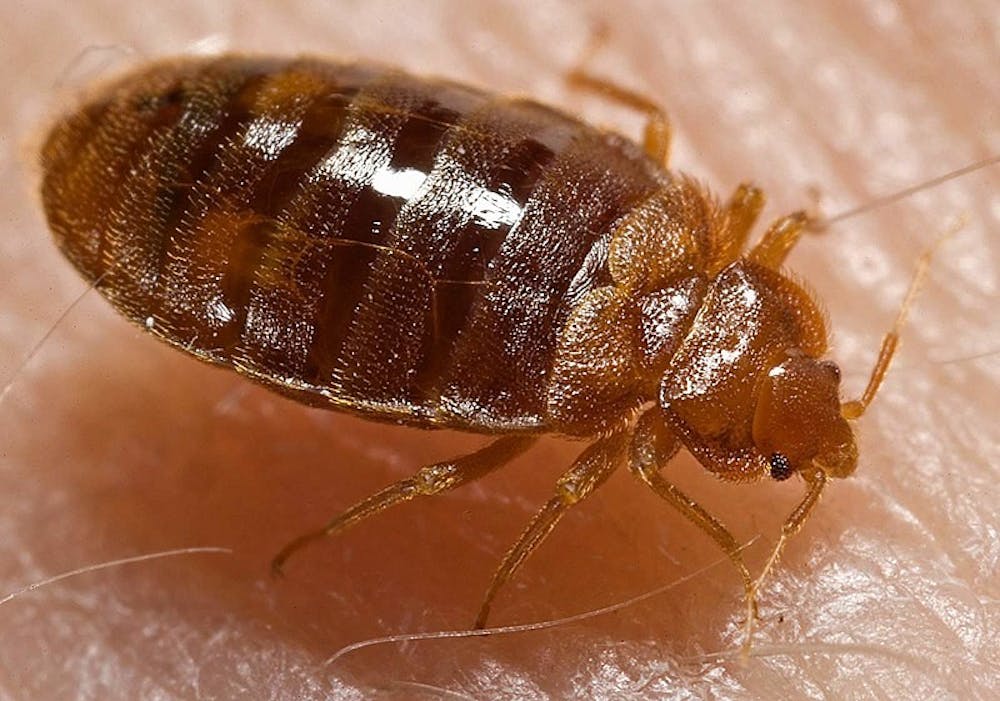There are few unwanted houseguests worse than the bedbug (Cimex lectularius).
This is primarily because they are so difficult to detect due to their appearance and behavior. Their flatter bodies allow them to hide in the seams of furniture, along baseboards and even in the heads of screws.
Adult insects, which are barely a quarter-inch long, are sometimes confused with cockroaches, ticks and other common bugs. Whitish-yellow nymphs and pearly, pinhead-sized eggs are nearly invisible to the naked eye.
On top of this, while we often associate bedbugs with the itchy red welts produced when they feed on humans, whose blood is their sole food source, studies suggest that almost 30 percent of people have no reaction to bedbug bites at all.
Once an infestation is discovered, bedbugs are also notoriously hard to eradicate. In addition to their penchant for obscure hiding places, adult females can survive for up to a year without ingesting any blood.
The insects can survive being vacuumed and exposure to sub-zero temperatures for up to four days. They also swiftly develop resistance mechanisms, from a thicker outer shell, to the production of more enzymes that metabolize insecticides, which they use in combinations to combat new pesticides.
Currently, sustained heat, namely temperatures of at least 120 degrees Fahrenheit, or around 49 degrees Celsius, is recommended to eradicate bedbug infestations.
Desiccants, which kill insects by drying them out, are also a good option, especially since bedbugs have not yet developed a resistance to them. These methods, however, are inconvenient, expensive and at times can prove to be fruitless.
The question then becomes how to avoid bringing the creatures into the home in the first place.
While reports of bedbug sightings in non-traditional locations such as taxis and movie theaters have increased in number, the chance of bringing the insects home from those places is lower.
“It’s probably unlikely people will transport them home when numbers are low and it’s a ‘non-bed’ environment,” Michael Potter, a professor of entomology at the University of Kentucky, said in an interview with the Washington Post .
There are, however, several higher-risk locations to keep in mind. Pest-control professionals reported that the number of nursing homes they encountered with bedbug infestations had increased by over 50 percent since 2010.
Individuals with elderly relatives in such homes are advised to be vigilant, since older adults will have difficulty seeing the bugs and are often less likely to develop noticeable welts after bites, since their immune systems are less reactive.
“If you have a loved one in a nursing home, you should be inspecting his or her bed regularly, not relying on people there to do it,” Dini Miller advised, a Virginia Tech professor of entomology, according to the Washington Post.
College dorm rooms are also at risk, due to the large number of people sleeping in the same area, as well as the frequent movement of students between dorm rooms and around common spaces. Institutions, however, are usually very aware of the dangers of a bedbug infestation and have procedures in place if a student suspects an issue.
What is more concerning is the increasing frequency of bedbug sightings in hospital emergency and waiting rooms, brought in by patients or their visitors.
While bedbugs do not transmit any known diseases, patients increase their risk of contracting infections if they scratch bites, breaking their skin.
So while there is no need for general panic when it comes to the bugs, vigilance is always recommended.





